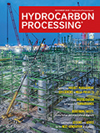
November 2024
Special Focus—Process Controls, Instrumentation and Automation
The goal of this article is to highlight how: Supervised machine-learning and the Internet of Things can be used to develop a soft sensor that can enable the plant operator to continuously monitor product analysis, as well as gain insights into the root cause of off-spec product—in this work, the off-spec product is distillate. Also, this article will show how reinforcement learning can be used to train an AI agent to operate the plant.
Accurate grab sampling practices are necessary to validate the quality of chemical products with precise compositions. Operators must follow proper procedures to avoid compromising the sample. Otherwise, the result may be an inaccurate analysis of their product, leading to quality lapses and potentially costing a facility thousands of dollars in revenue.
When operating in a potentially explosive atmosphere, several crucial aspects must be considered. These include understanding the potential hazards and choosing the correct tools for the identified hazardous areas. The rules and regulations surrounding the use of equipment in hazardous areas are deciphered and explained within this work.
While approximately 70% of ammonia production is used to make fertilizers, it is also identified as the largest carbon dioxide (CO2)-emitting chemical industry process. This article examines several novel technologies to improve the sustainability of the ammonia production process.
Environment and Safety
This article will mainly focus on horizontal flare systems and grade-level burn pits. Design considerations, operational challenges and several lessons learned will be discussed.
Since petrochemical plant control buildings are usually designed to be blast-resistant without external windows, convection ventilation cannot be carried out, leading to poor air circulation. As a result, there are higher requirements for indoor air quality, and it is necessary to optimize the heating, ventilation and air conditioning (HVAC) system design scheme to improve air quality.
Maintenance, Reliability and Inspection
This article presents a review of a failure that happened in a hairpin heat exchanger type on the shell side in a H2 (H2) reformer unit.
Throughout refineries, petrochemical plants and offshore oil and gas platforms, personnel are often required to work near equipment that operates at high temperatures. Protecting those workers from skin-contact burns has typically involved two approaches: implementing physical barriers and covering the hot assets with insulation and cladding. This article details how thermal insulative coatings can be used to improve safety and guard against corrosion.
Hydrogen
Because it can be stored, transported and burned without GHG emissions, hydrogen (H2) is emerging as a potential frontrunner as a clean fuel source. However, transporting H2 must be efficient and cost-effective, a task that requires careful consideration and innovative solutions. This article will examine requirements for effective H2 transportation and accurate measurement in its challenging environments.
Trends and Resources

- Phillips 66 Limited agrees to acquire Lindsey Oil Refinery assets 1/5
- IIT Guwahati (India) develops sunlight-driven catalyst to convert carbon dioxide into methanol fuel 1/5
- PBF Energy provided an update on efforts to rebuild its Martinez refinery 1/5
- C2X to deliver 3.6 MM metric tons of carbon removal to Microsoft over 12 yrs 1/5
- Tasnee's Saudi Ethylene and Polyethylene Co. commences planned maintenance of ethylene plant 1/2
- Advanced Biofuels Canada Association welcomes federal biofuels production incentive coming into force 1/2




